Cisco DX650
The Cisco DX650 desktop collaboration device lets you communicate in multiple ways all from one platform. Use this device as a VoIP phone and speakerphone, or for presence, instant messaging and high-definition video conferencing. With onboard Android 4.1 and a touchscreen, the device supports downloadable apps and completely intuitive functionality.
Boost productivity with the Cisco DX650, giving your employees an all-in-one portal for instant communications and real-time collaboration. Standards-based operation, including support for the H.264 video format, lets you communicate with video conferences or playback multimedia from your desktop.
Cisco DX650 Video Phone Quick Specs:
- Connectivity Type: IP/VoIP
- Networking Protocol: SIP
- Ethernet Ports: 2x 10/100/1000 Gigabit
- PoE: IEEE 802.3af/at Class 3/4 compliant
- WiFi: IEEE 802.11a/b/g/n compliant
- Bluetooth: 3.0 EDR
- Additional Ports:
- 1x HDMI type A
- 1x 3.5 mm stereo line in/out
- 2x USB 2.0 for headset, keyboard, mouse
- 1x USB 2.0 Micro-B for file transfer
- 1x HDSC slot
- Display: 7″ 1024 x 600 touchscreen
- Operating System: Android 4.1.1
- Camera: integrated 1080p 30 fps
- Video Codecs: H.264 High Profile, AVC
- Video Resolution: up to 1080p Full HD at 30 fps
- Audio Codecs: G.711µ/a, G.722, G.729a/ab, iLBC, iSAC
- Speakerphone: full-duplex
- Voice Quality: wideband, narrowband
- QoS: yes
Cisco DX650 Video Collaboration Device Package Contents:
Features
Ergonomic design
- Touch-based phone application provides intuitive arrangement of lines, features, and calls. End Call, Transfer, Conference, and Hold appear on dedicated hard keys.
Display
- The display measures 7.00 in. (17.78 cm) diagonally; 6.05 in. (15.36 cm) horizontally; and 3.43 in. (9.00 cm) vertically.
- Capacitive touchscreen includes support for various multitouch gesture commands to interact with contacts, collaboration applications, voice and video calling, and third-party applications.
- High-resolution Widescreen Super Video Graphics Array (WSVGA) has 1024 x 600 pixel effective resolution. It offers backlit Light-Emitting Diodes (LEDs), it is tilt-adjustable (up to 25-degree range), and it has a Thin-Film-Transistor (TFT) Liquid Crystal Display (LCD).
- The display has 24-bit colour depth (up to 16.7M colours using 6-bit + High Frame Rate Control [FRC]).
- The display supports localisation requiring double-byte Unicode encoding for fonts.
- The display tilts back 25 degrees and forward 5 degrees from the perpendicular position in the desktop configuration.
Audio
- The DX650 supports enhanced wideband audio (using the G.722 or iSAC codecs) through the handset, headset, and speakerphone; it is TIA-920-compliant.
- The speakerphone is capable of integrated full-duplex wideband audio.
- The 0.14-in. (3.5-mm) stereo headset jack also supports optional headphones or external speakers.
Handset
- The handset is a standard wideband-capable audio handset (connects through an RJ-9 port).
- The standard coiled cord has a custom end for concealed cable routing beneath the phone (cord length is approximately 21-in. [55-cm] coiled and up to 72-in. (183-cm) extended).
- The handset is hearing aid-compatible (HAC) and meets Federal Communications Commission (FCC) loudness requirements for the Americans with Disabilities Act (ADA). Section 508 loudness requirements can be achieved using industry-standard inline handset amplifiers such as Walker Equipment W-10 or CE-100 amplifiers. The dial pad is also ADA-compliant.
Front camera
- The camera offers HD video communication with Cisco TelePresence System interoperability and other H.264 and AVC video endpoint interoperation for immersive video communication.
- The integrated HD-capable front camera supports up to 1080p 30-fps video encoding and decoding.
- With an integrated privacy screen slide switch, you can mechanically disable video transmission.
- A dedicated LED indicator shows video status.
- The field of view is 75.0 degrees diagonally and 67.4 degrees horizontally.
Operating system
- Android OS 4.1.1 (Jelly Bean with SE Android Enforcement).
Processor
- TI OMAP 4460 1.5-GHz dual-core ARM Cortex-A9 processor.
Storage
- 8-GB eMMC NAND Flash memory (embedded multimedia card; nonvolatile).
Memory
- 2-GB RAM; Low Power Double Data Rate Synchronous Dynamic Random-Access Memory (LPDDR2 SDRAM).
Ports and slots
- High-Definition Multimedia Interface (HDMI) type A port.
- HDMI port Dual Independent Display: Permits content from a different application to be displayed on an optional, customer-supplied LCD monitor from that presented on the DX600 Series display; an alternative “mirrored mode” enables the DX600 Series display content to be pushed out to an adjacent LCD monitor.
- 3.5-mm stereo line in/out jack (for optional external headset, speakers, or headphones).
- High-speed USB 2.0 ports:
- Two standard type A ports (for keyboard, mouse, external camera, thumb drive and memory stick, and headset connectivity)
- One Micro-B USB port (allows connection to another device [for example, PC] for file transfer)
- Maximum of 500 mA power output at 5V or 2.5W (depending on power budget) total across all USB ports
- Micro Secure Digital Standard Capacity (HDSC) slot for nonvolatile storage of applications or file expansion up to 32 GB (standard-definition [SD] card speed Class 4 or later recommended)
- Auxiliary port (reserved for future use).
Physical buttons
- 12-key dial pad
- Conference
- Transfer
- Hold
- End Call
- Volume Up/Down bar
- Audio mute (with LED status indicator)
- Stop video (with LED status indicator)
- Speakerphone (with LED status indicator)
- Headset (with LED status indicator)
- Power/Lock button (with LED status indicator)
Visual indicator
- Visual alert (LED) for incoming call and message-waiting indicator (MWI) on handset or cradle
Camera status LED indicator
Cisco EnergyWise Sleep Indicator on Lock button
Physical dimensions (H x W x D)
- Typical desktop configuration with handset and foot stand:
- 8.46 x 10.35 x 8.19 in. (21.5 x 26.3 x 20.8 cm)
- Wall-mount configuration with wall plate and handset (foot stand removed):
- 11.63 x 10.35 x 3.74 in. (29.5 x 26.3 x 9.5 cm)
Weight
- 3.81lb (1.73 kg) (phone, foot stand, handset, and handset cord)
- 3.92 lb (1.78 kg) (phone, handset, wall-mount bracket, and handset cord)
Phone-casing composition
- Acrylonitrile butadiene styrene (ABS) plastic in textured Cisco “Smoke” colour with metallic foot stand.
Power
- IEEE 802.3af (Class 3) or IEEE 802.3at (Class 4) Power over Ethernet (PoE) standards are supported.
- The DX650 is compatible with both Cisco Discovery Protocol and Link Layer Discovery Protocol-Media Endpoint Discovery (LLDP-MED) PoE switch blades.
- Power budget: 13.7W (Cisco Discovery Protocol) or 15.1W (LLDP) for 802.3AF and low-power USB peripheral support; greater than 15.4W and 802.3AT required for high-power USB peripheral support.
Physical security
- Compatible with Kensington Security Slot (K-Slot) anti-theft system (can accommodate a lock up to 20 mm wide)
- Optional wall-mount bracket (lockable)
Connectivity
Ethernet
- Internal 2-port Cisco Ethernet switch allows for a direct connection to a 10/100/1000BASE-T Ethernet network (IEEE 802.3i/802.3u/802.3ab) through an RJ-45 interface with single LAN connectivity for both the phone and a co-located PC.
- The system administrator can designate separate VLANs (IEEE 802.1Q) for the PC and phone, providing improved security and reliability of voice and data traffic.
Desktop WiFi
- As an alternative to wired Ethernet, the DX650 supports a WiFi radio with integrated antenna enabling connectivity to a WiFi access-point infrastructure, thereby saving on the labour costs of pulling Ethernet cables to every work location.
Network features
- Cisco Discovery Protocol
- Cisco Peer-to-Peer Distribution Protocol (PPDP)
- LLDP-MED
- Session Initiation Protocol (SIP) for signalling
- Session Description Protocol (SDP)
- User Datagram Protocol (UDP) (used only for Real-Time Transport Protocol [RTP] streams)
- Dynamic Host Configuration Protocol (DHCP) client or static configuration
- Transparent secure roaming
- Gratuitous Address Resolution Protocol (GARP)
- Switch auto-negotiation
- Domain Name System (DNS)
- Web proxy (configured manually or by auto-configuration Protected Access Credential [PAC] files)
- NT LAN Manager (NTLM) and Kerberos authentication
- Trivial File Transfer Protocol (TFTP)
- Secure Hypertext Transfer Protocol (HTTPS)
- WiFi management
- IPv4 configuration
- IPv6 configuration
- Virtual Local Area Network (VLAN)
- Real-Time Control Protocol (RTCP) (provides quality of service [QoS] data [such as jitter, latency, and round-trip delay] on RTP streams in order to provide a better video experience)
- Secure Real-Time Transport Protocol (SRTP)
- Software port speed (manual or auto-configuration, including disablement)
- PC port speed (manual or auto-configuration, including disablement)
- Telepresence Interoperability Protocol (TIP)
- Binary Floor Control Protocol (BFCP)
Bluetooth
- Bluetooth 3.0 Enhanced Data Rate (EDR) Class 2 technology (up to 30-ft [10m] range)
- Human Interface Device (HID) keyboard and mouse support for adding additional input accessories
- Hands-Free Profile (HFP) for untethered headset connections and voice communications
- Phone Book Access Profile (PBAP), which enables the exchange of phone book objects between devices
- Advanced Audio Distribution Profile (A2DP) for streaming audio
- Object Push Profile (OPP) for generic file exchange
Accessories
External Camera
- External camera option with the Logitech Webcam C920-C for the Jabber platform or the Logitech C930e provides up to 1080p 30-fps video calls with an optional external display.
Firmware
Call-platform support; provisioning and management
- Cisco UCM Version 7.1(5), 8.5(1), 8.6(1), 8.6(2), 9.1(2), 10.0(1) and 10.5(1)
- Backward compatibility with Cisco UCM Versions 7.1(5), 8.5(1) and 8.6(1) (no support for Android package [APK] provisioning in 7.1(5))
- Minimum supported Cisco UCM for Cisco Expressway: 9.1(2) SU1
- Minimum Supported Cisco Expressway X8.5.x
- Cisco Hosted Collaboration Solution (HCS) Version 8.6(2) or later
- Cisco Business Edition 6000 Version 9.1 or later
Upgrading process
- Software upgrade of the device through Cisco UCM
- Support for online firmware upgrades using TFTP
- HTTP firmware management
Temperature range
Operating temperature
Relative humidity
- 10 to 95% (noncondensing)
Storage temperature
Software Features
Android core features
- Fully customisable Cisco Launcher and App Tray “Home Screen” enables you to place your own application shortcuts, widgets, and folders.
- Home screen supports up to five separate screen views or pages with a 6 x 4 icon grid.
- Landscape-orientated applications are supported.
- On-screen keyboard is supported.
Android bundled applications and widgets
- Calculator
- Calendar
- Camera
- Clock
- Contacts
- Direct Dial
- Email
- Internet Message Access Protocol (IMAP)
- Post Office Protocol 3 (POP3)
- Microsoft Exchange ActiveSync
- Favourites
- Gallery
- Phone features (for example, Forward All, Privacy, Do Not Disturb, Mobility, and Self-View)
- Wallpapers (including Live Wallpapers)
- Web browser
Google bundled applications
- Google Play (enabled by administrator through Cisco UCM; includes country-approved Google mobile services applications)
- Gmail
- Google settings
- Maps
- Play Books
- Play Magazines
- Play Movies
- Play Music
- Search
Cisco bundled applications
- Cisco AnyConnect Secure Mobility Client (VPN) Version 3.0
- Cisco Jabber IM (which offers chat and presence capabilities) Version 9.8
- Cisco WebEx Version 4.5
- Quick Contact Badge (allows you to easily collaborate with your contacts to place a call, send an email message, send an instant message (IM), or start a WebEx® meeting)
- Visual Voicemail
Intelligent proximity
- Contact synchronisation with Bluetooth-paired, Android, or iOS mobile device that supports PBAP
- Call-history synchronisation to view placed or missed calls from mobile device on the DX650
- Audio path routing sends audio through the DX650 for a mobile device-connected call
Configuration modes
- Standard, fully functional mode that enables all aspects of the phone including applications and accounts
- Phone-only mode that hides applications and accounts and provides phone-only voice and video call capabilities
Application deployment options and management
- Cisco UCM App Client Configuration (when enabled, allows you to select the applications you want to install from a predefined list)
- Allow applications from unknown sources – such as Android APK files that are received through email, through IM, or from a Secure Digital (SD) card (Enabled, Disabled, or User Controlled setting configured by administrator through Cisco UCM)
- Company Photo Directory (ability to set up and link photo directory URL image location associated with respective user)
Built-in training and setup assistance
- Setup Assistant wizard (helps configure email, Jabber IM, WebEx, and Voicemail account settings)
- Preloaded end-user tutorials that provide helpful integrated multimedia sessions and review key phone operations and personal settings
Third-party application development
- Cisco Collaboration application programming interfaces (APIs) through a Software Developer Kit (SDK)
Language support
- Arabic, Egypt (ar_EG)
- Bulgarian, Bulgaria (bg_BG)
- Catalan, Spain (ca_ES)
- Chinese, PRC (zh_CN)
- Chinese, Taiwan (zh_TW)
- Croatian, Croatia (hr_HR)
- Czech, Czech Republic (cs_CZ)
- Danish, Denmark (da_DK)
- Dutch, Netherlands (nl_NL)
- English, Britain (en_GB)
- English, United States (en_US)
- Finnish, Finland (fi_FI)
- French, France (fr_FR)
- German, Germany (de_DE)
- Greek, Greece (el_GR)
- Hebrew, Israel (he_IL)
- Hungarian, Hungary (hu_HU)
- Italian, Italy (it_IT)
- Japanese (ja_JP)
- Korean (ko_KR)
- Latvian, Latvia (lv_LV)
- Lithuanian, Lithuania (lt_LT)
- Norwegian bokmål, Norway (nb_NO)
- Polish (pl_PL)
- Portuguese, Brazil (pt_BR)
- Portuguese, Portugal (pt_PT)
- Romanian, Romania (ro_RO)
- Russian (ru_RU)
- Serbian, Republic of Serbia (sr_RS)
- Slovak, Slovakia (sk_SK)
- Slovenian, Slovenia (sl_SI)
- Spanish, Spain (es_ES)
- Swedish, Sweden (sv_SE)
- Thai, Thailand (th_TH)
- Turkish, Turkey (tr_TR)
Calling feature support
- + Dialing (ITU E.164)
- Abbreviated dialing
- Adjustable ringing and volume levels
- Adjustable display brightness
- Auto-answer
- Auto-detection of headset
- Barge (cBarge)
- Callback
- Call Chaperone
- Call forward
- Call forward notification
- Call-history lists
- Call park (including Directed Call Park and Assisted Directed Call Park)
- Call pickup
- Call timer
- Call waiting
- Caller ID
- Corporate directory
- Conference (ad hoc)
- Direct transfer
- Divert (iDivert)
- Do Not Disturb (DND)
- Extension Mobility service
- Fast-dial service
- Forced access codes and client matter codes
- Group call pickup
- Hold (and Resume)
- Intercom
- International call logging
- Join (ad hoc)
- Last-number redial (LNR)
- Malicious-caller ID
- Message-waiting indicator (MWI)
- Meet-me conference
- Mobility (Mobile Connect and Mobile Voice Access)
- Music on hold (MoH)
- Mute (audio and video)
- Network profiles (automatic)
- On- and off-network distinctive ringing
- Personal directory
- PickUp
- Predialing before sending
- Privacy
- Private Line Automated Ringdown (PLAR)
- Ring tone per line appearance
- Self-View (video call)
- Service URL
- Shared line(s)
- Silent Monitoring and Recording
- Time and date display
- Transfer (ad hoc)
- Visual Voicemail
- Voicemail
Audio codec support
- Narrowband audio compression codecs: G.711a, G.711u, G.729a, G.729ab, and Internet Low Bitrate Codec (iLBC)
- Wideband audio compression codecs: G.722, Internet Speech Audio Codec (iSAC), and iLBC audio compression codecs
Emergency services
- Emergency Calling Service dialling
Accessibility features
- HAC handset meets Federal Communications Commission (FCC) loudness requirements for the Americans with Disabilities Act (ADA). Section 508 loudness requirements can be achieved using industry-standard inline handset amplifiers such as Walker Equipment W-10 or CE-100 amplifiers. Dial pad is also ADA-compliant.
- Additional accessibility features for the vision impaired, the blind, and the hearing and mobility impaired include user-defined and customisable:
- Displayfont size and screen brightness settings
- Touchscreen customisable touch and hold delay
- Talkback audio prompts and spoken password
- Support for webscripts
Security Features
Hardware
- Secure boot
- Secure credential storage
- Device authentication
- File authentication and encryption
- Image authentication and encryption
- Signaling authentication
- Random bit generation
- Hardware cryptographic acceleration
- Encrypted configuration files
- Encrypted file system
Certificate management
- Certificate Authority Proxy Function (CAPF) support for additional security
- Manufacturer-Installed Certificates (MIC)
- Locally Significant Certificates (LSC)
- X.509 Digital Certificates (DER encoded binary); both DER and Base-64 formats are acceptable for the client and server certificates; certificates with a key size of 1024, 2048, and 4096 are supported
Network
- Wired: 802.1x supplicant options for network authentication use:
- Extensible Authentication Protocol: Extensible Authentication Protocol-Flexible Authentication via Secure Tunneling (EAP-FAST)
- Extensible Authentication Protocol: EAP Transport Layer Security (EAP-TLS)
- Wireless
- Wireless: WiFi Protected Access 2 (WPA2) (EAP-FAST)
- Wireless Equivalent Privacy (WEP)
- EAP-TLS
- Protected Extensible Authentication Protocol – Generic Token Card (PEAP-GTC)
Media and data signalling
- TLS
- SRTP
- HTTPS for clients
- BFCP for viewing shared content
Enterprise access
- Cisco AnyConnect Secure Mobility Client
- Web Proxy (manual configuration or auto-configuration of Protected Access Credential [PAC] files)
- NTLM and Kerberos authentication
Device management
- Remote wipe
- ActiveSync remote wipe (email, contacts, calendar, etc.)
- Self-service wipe
- Wipe after unsuccessful login attempts
- Factory reset
Policy management
- Password complexity
- Disable USB
- Disable Speakerphone
- Disable Headset
- Secure Digital I/O (SDIO) enable/disable
- Bluetooth
- WiFi
- Access to Android market
- Screen Lock and Automatic Lock (PIN or password) device
- Android Debug Bridge (ADB)
Energy policy management
- Power Save (basic power save functions including backlight time and day on and duration)
- Cisco EnergyWise (Power Save Plus) mode provides additional intelligent energy management used to help maximise energy savings by placing the phone into a lower power status without interfering with end-user productivity, desktop maintenance, or upgrades
Diagnostics
- The integrated Cisco Collaboration Problem Report Tool can send information directly to your system administrator when you experience problems with your phone or application (requires a configured email account)
- Log Server
Video Specifications
Video standards
- H.264 and AVC (H.264/MPEG-4 Part 10 Advanced Video Coding)
Frame rates
- Up to 30 fps (maximum) using H.264 and AVC for videoconferencing
Frame or picture formats
- CIF (352 x 288 pixels)
- VGA (640 x 480 pixels)
- 240p (432 x 240 pixels)
- 360p (640 x 360 pixels)
- 480p (848 x 480 pixels)
- WSVGA (1024 x 600 pixels)
- HD 720p (1280 x 720 pixels)
- HD1080p (1920 x 1080 pixels)
Supported HDMI resolutions
- 1920 x 1200 (WUXGA)
- 1920 x 1080 (HD 1080p)
- 1680 x 1050 (WSXGA+)
- 1600 x 1200 (UXGA)
- 1280 x 1024 (SXGA)
- 1280 x 720 (HD 720p)
- 1152 x 864 (XGA+)
- 1024 x 768 (XGA)
WiFi Features and Specifications
Protocols
- IEEE 802.11a, 802.11b, 802.11g, 802.11n
Frequency bands and operating channels
- 2.412 – 2.472 GHz (channels 1 – 13)
- 5.180 – 5.240 GHz (channels 36 – 48)
- 5.260 – 5.320 GHz (channels 52 – 64)
- 5.500 – 5.700 GHz (channels 100 – 140)
- 5.745 – 5.825 GHz (channels 149 – 165)
- IEEE 802.11d is used to identify available channels
Non-overlapping channels
- 2.4 GHz (20 MHz channels): up to 3 channels
- 5 GHz (20 MHz channels): up to 24 channels
- 5 GHz (40 MHz channels): up to 9 channels
Operating modes
- Auto (default), preference to strongest RSSI for 2.4 GHz or 5 GHz
- 2.4 GHz only
- 5 GHz only
Data rates
- 802.11a: 6, 9, 12, 18, 24, 36, 48, 54 Mbps
- 802.11b: 1, 2, 5.5, 11 Mbps
- 802.11g: 6, 9, 12, 18, 24, 36, 48, 54 Mbps
- 802.11n: HT MCS 0, MCS 1, MCS 2, MCS 3, MCS 4, MCS 5, MCS 6, MCS 7
2.4 GHz receiver sensitivity
IEEE 802.11b:
- 1Mbps: -95 dBm
- 2 Mbps: -93 dBm
- 5.5 Mbps: -90 dBm
- 11 Mbps: -86 dBm
IEEE 802.11g:
- 6 Mbps: -89 dBm
- 9 Mbps: -89 dBm
- 12 Mbps: -87 dBm
- 18 Mbps: -85 dBm
- 24 Mbps: -81 dBm
- 36 Mbps: -78 dBm
- 48 Mbps: -74 dBm
- 54 Mbps: -72 dBm
IEEE 802.11n HT20:
- MCS 0: -88dBm
- MCS 1: -86 dBm
- MCS 2: -84 dBm
- MCS 3: -81 dBm
- MCS 4: -78 dBm
- MCS 5: -73 dBm
- MCS 6: -71 dBm
- MCS 7: -69 dBm
5 GHz receiver sensitivity
IEEE 802.11a:
- 6 Mbps: -91 dBm
- 9 Mbps: -91 dBm
- 12 Mbps: -90 dBm
- 18 Mbps: -88 dBm
- 24 Mbps: -85 dBm
- 36 Mbps: -81 dBm
- 48 Mbps: -77 dBm
- 54 Mbps: -76 dBm
IEEE 802.11n HT20:
- MCS 0: -91 dBm
- MCS 1: -89 dBm
- MCS 2: -86 dBm
- MCS 3: -84 dBm
- MCS 4: -81 dBm
- MCS 5: -76 dBm
- MCS 6: -74 dBm
- MCS 7: -72 dBm
IEEE 802.11n HT40:
- MCS 0: -90 dBm
- MCS 1: -87 dBm
- MCS 2: -85 dBm
- MCS 3: -81 dBm
- MCS 4: -78 dBm
- MCS 5: -74 dBm
- MCS 6: -72 dBm
- MCS 7: -70 dBm
Transmitter output power
2.4 GHz:
- 802.11b: up to 16 dBm
- 802.11g: up to 16 dBm
- 802.11n HT20: up to 16 dBm
5 GHz:
- 802.11a: up to 16 dBm
- 802.11n HT20: up to 15 dBm
- 802.11n HT40: up to 15 dBm
Antenna
- 2.4 GHz: 4 dBi peak gain
- 5 GHz: 4 dBi peak gain
Access point support
Wireless security
Authentication:
- WiFi Protected Access (WPA) Versions 1 and 2 Personal and Enterprise
- Extensible Authentication Protocol – Flexible Authentication via Secure Tunneling (EAP-FAST)
- Protected Extensible Authentication Protocol – Microsoft Challenge Handshake Authentication Protocol Version 2 (PEAP-MSCHAPv2)
- Protected Extensible Authentication Protocol – Generic Token Card (PEAP-GTC)
- Extensible Authentication Protocol – Transport Layer Security (EAP-TLS)
Encryption:
- 40-bit and 128-bit static Wired Equivalent Privacy (WEP)
- Temporal Key Integrity Protocol (TKIP) and Message Integrity Check (MIC)
- Advanced Encryption Standard (AES)
Fast secure roaming
- Cisco Centralised Key Management (CCKM)
QoS
- IEEE 802.11e and WiFi Multimedia (WMM)
- Enhanced Distributed Channel Access (EDCA)
- QoS Basic Service Set (QBSS)
Radar detection
- Dynamic frequency selection (DFS) and transmit power control (TPC) according to IEEE 802.11h
Warranty
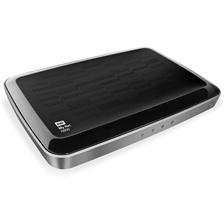 WD ROUTER WIFI HD DUAL BAND MY NET N900 - WITH 7 GIGA PORTS & USB245.00
1 × AED309.00
WD ROUTER WIFI HD DUAL BAND MY NET N900 - WITH 7 GIGA PORTS & USB245.00
1 × AED309.00 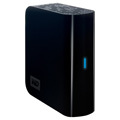 Western Digital My Book Essential Edition 500GB
1 × AED219.00
Western Digital My Book Essential Edition 500GB
1 × AED219.00  Cisco Meraki MX68W Router/Security Appliance with 3-Year Advanced Security License and Support
1 × AED14,799.00
Cisco Meraki MX68W Router/Security Appliance with 3-Year Advanced Security License and Support
1 × AED14,799.00  Promise Technology VR2KMEM8G 8GB RAM / Memory Module
1 × AED799.00
Promise Technology VR2KMEM8G 8GB RAM / Memory Module
1 × AED799.00 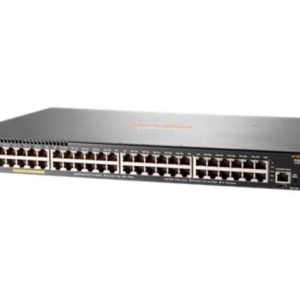 HPE Aruba 2930F 48G PoE+ 4SFP+ Switch – JL256A
1 × AED9,999.00
HPE Aruba 2930F 48G PoE+ 4SFP+ Switch – JL256A
1 × AED9,999.00 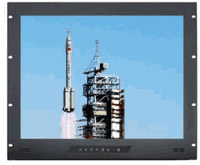 Cyberview 7U 17" Touchscreen Rack Mount LCD Panel
1 × AED2,999.00
Cyberview 7U 17" Touchscreen Rack Mount LCD Panel
1 × AED2,999.00 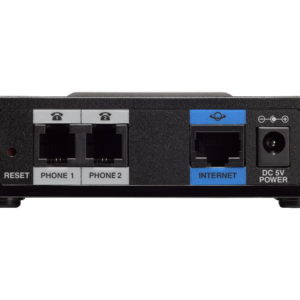 Cisco SPA112 2 Port VoIP Telephone Adapter/ SIP ATA with 2-FXS/ VOIP Ports
1 × AED299.00
Cisco SPA112 2 Port VoIP Telephone Adapter/ SIP ATA with 2-FXS/ VOIP Ports
1 × AED299.00 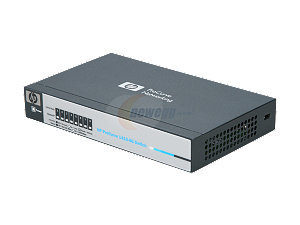 HEWLETT-PACKARD 1410-8G SWITCH -8 Ports - 8 x RJ-45 - 10/100/1000Base-T / J9559A
1 × AED279.00
HEWLETT-PACKARD 1410-8G SWITCH -8 Ports - 8 x RJ-45 - 10/100/1000Base-T / J9559A
1 × AED279.00  Dell J4588 / C4372 / 1U295 PERC 4/SC SCSI RAID Controller
1 × AED399.00
Dell J4588 / C4372 / 1U295 PERC 4/SC SCSI RAID Controller
1 × AED399.00 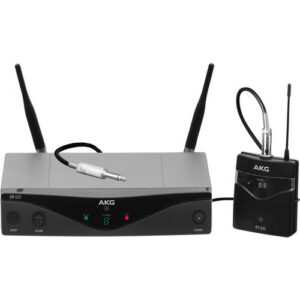 AKG WMS420 Wireless Instrument System (Band A: 530 to 559 MHz)
1 × AED1,499.00
AKG WMS420 Wireless Instrument System (Band A: 530 to 559 MHz)
1 × AED1,499.00  AirEngine9700-M1 - Huawei Wireless Access Controllers
1 × AED147,199.00
AirEngine9700-M1 - Huawei Wireless Access Controllers
1 × AED147,199.00  NTI SERIMUX-CS-24E 24-Port Console Serial Switch w/ Ethernet Control
1 × AED2,999.00
NTI SERIMUX-CS-24E 24-Port Console Serial Switch w/ Ethernet Control
1 × AED2,999.00 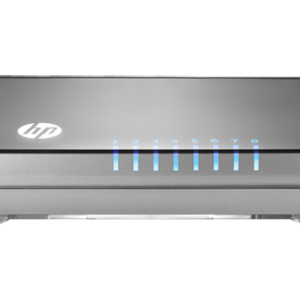 HP 1405-8G Switch
1 × AED199.00
HP 1405-8G Switch
1 × AED199.00  04 3550600
04 3550600 052 7036860
052 7036860
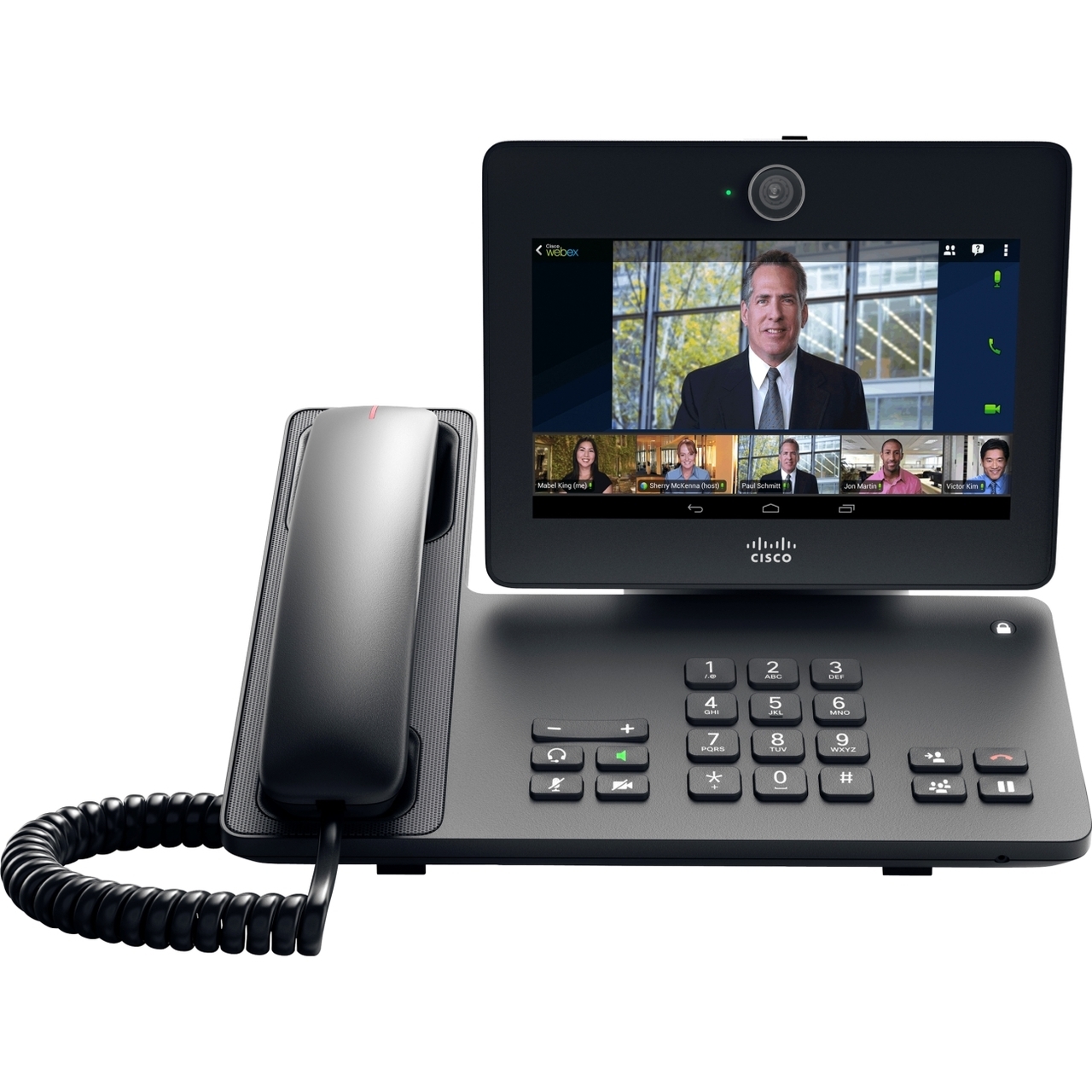
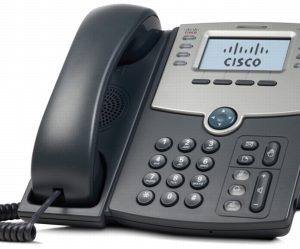
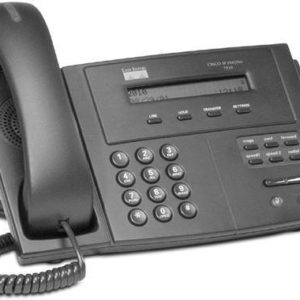
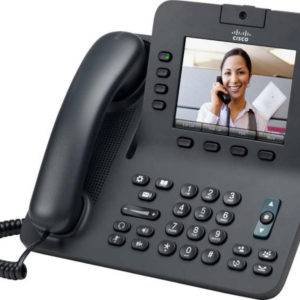
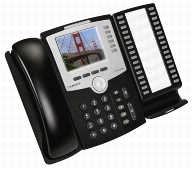

There are no reviews yet.